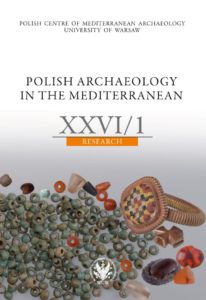Egyptian imitations of Chinese celadon from the 14th–15th centuries found at Kom el-Dikka in Alexandria
Egyptian imitations of Chinese celadon from the 14th–15th centuries found at Kom el-Dikka in Alexandria
Author(s): Małgorzata RedlakSubject(s): Visual Arts, Islam studies, 13th to 14th Centuries, 15th Century
Published by: Wydawnictwa Uniwersytetu Warszawskiego
Keywords: Islamic ceramics; Mamluk glazed ceramics; Egyptian imitations of Chinese celadons; Egyptian Mamluk celadons;
Summary/Abstract: In Islamic Egyptian glazed ceramics there are three ceramic types inspired by Chinese pottery, stoneware and porcelain: sancai pottery, celadon stoneware and Blue and White porcelain. Egyptian imitations of Chinese celadon ware, produced in the 14th and 15th centuries mainly by Cairene potters working at the Fustat workshops, are particularly noteworthy and the Kom el-Dikka site in Alexandria, excavated by the Polish Centre of Mediterranean Archaeology University of Warsaw, has yielded a collection of over 300 pieces. The typological analysis was based on 235 distinct fragments of utilitarian wares selected on account of their form, decorative elements, technical quality, possible technological defects and characteristics that qualify them as imitations of Chinese celadon. Two typological ware groups were distinguished: those inspired by Chinese prototypes and those representing indigenous Egyptian ceramics infused with certain features copied from the Chinese celadons.
Journal: Polish Archaeology in the Mediterranean
- Issue Year: 1/2017
- Issue No: XXVI
- Page Range: 59-84
- Page Count: 26
- Language: English

